It also might not come as a spoiler (as this will be a shorter AU/Tl with only foru mroe chapters) but clearly the Andean Axis will not win, this is not ASB after all ;D
You are using an out of date browser. It may not display this or other websites correctly.
You should upgrade or use an alternative browser.
You should upgrade or use an alternative browser.
Senor Adolfo – an Argentine Hitler
- Thread starter CountofDooku
- Start date
Threadmarks
View all 12 threadmarks
Reader mode
Reader mode
Recent threadmarks
Chapter Five: Totalitarian Control Chapter Six: Alliances Pacts and Factions Chapter Seven: Battle of Peru Peru Campaign or Northern Campaign Chapter Eight: Northern Andes War Chapter Nine: Conquista del Norte Chapter Ten: Comisariats Chapter Eleven: Andean Axis Powers on the Retreat Chapter Twelve: Post-War Order
Chapter Nine: Conquista del Norte
Chapter Nine: Conquista del Norte
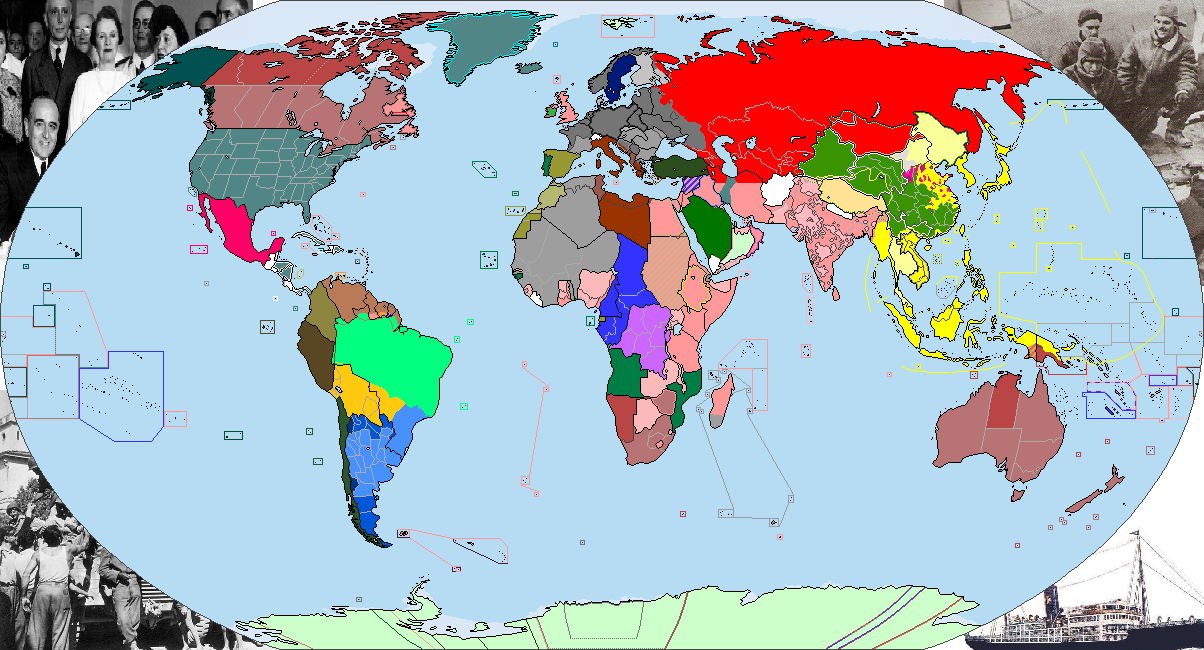
Known as the Conquista del Norte (Nordfeldzug/ Northern Conquest, or War for Lebensraum) against Brazil, falsely confused by some as the failed attempt to conquer Brazil and with it all of South America/ Latin America for the Anden Axis , but in truth this Eastern South American War fought mostly between Greater Argentina (Gran Argentina) and the Federal Republic of Brazil, which was partially supported by the Untied States of America, albeit not as much as the ideologically suspicious Soviet Union, because the German Empire and German controlled Europe was seen as the far more worse and much more dangerous threat globally. A political ideological, cultural, lingual and even racial war fought by Argentina with all means of their nation state in the attempt to annex the majorly Brancos (White) people in the South of the Country and the capital region, while multiracial Pardos and African Pretos dominated the Center and the North of Brazil would be Argentinian puppet states, as well as so called Race States for the Mestizo Pardos/ Pretos in which they would govern among themselves, with Argentinian/ White oversight, or advisers, but not outright direct control for the most part. This included the annexation of most of Brazil’s 47,8 million population, most of it’s Coal and other goods being directly integrated into Argentina, alongside the majorly German, Italian, Spanish and Portuguese descendant ethnic population in the Southern States until the Parana River. Most would be administrated by the Argnetinian Military Command during occupation of Rio Grande de Sul, Santa Catharina and Parana, but despite being larger then the Federal United States of America the Argentinians and their German leadership did not wish to annex to much non-white areas, despite planning to use even those populations as slave labor later on. A source for coffee, cotton, cacao and corn around 500 million US Dollar had also been invested into Brazil in between the wars, fewer then the around 1 billion $ invested in Argentina ans Chile each, which was why many by the Argentinian Propaganda so called Yankee-Imperialists supported the Isolationists and to remain neutral in the South American Wars and conflicts in Latin America by the Andean Axis, up to the point that some even supported the Andean Axis diplomatically, with trades, goods and equipment of all kind before they joined the War against them.

The good neighbor policy quickly faded to that of the Washington Police who controlled and guided it’s neighbors into the American Alliance/ American Allies against a common threat that might aid the Germans and Japanese and their allies to one day bring the war directly unto American soil once it all the European Great War, the Asian Great War and the South American Great war local conflicts had merged into the new Second Great War, Second Global War, or Second World War. Supported by the British, French, Dutch and mainly Americans, Brazil held out and despite Argentinian and Andean Axis ships raiding the South Atlantic, South Pacific up to the Caribbean and US Californian West Coast, plots to bomb and shut down the Panama canal, the supply routes to Brazil trough the Caribbean and even to instigate a Southern States, or so called Neger (Negro) Southern States Rebellion, as German and Argentinian Nazi’s called one of their more outlandish plans, to make the Southern Democratic States, or their local African American Population rise up, all failed. Mexico itself became a Allied American Nation State when various Andean Axis, as well as German supported bandits and civil war factions ultimately lost to the central government and the American support it received. In Brazil itself most southern plantations and infrastructure, alongside parts of the overall forest were destroyed during the War with Argentina, but heavy battles in Sao Paulo and Santos weakened the Andean Axis forces resulting in the Battle of Rio de Janeiro becoming a turning point and the American Special Operations support for Anti-Andean Axis Guerrilla fighters in Paraguay and Uruguay along the Paraguay River and Parana River, which overall weakened the Andean Axis Powers supply lines and were the last straw breaking the Andean Axis war of conquest in Brazil and turning the tide of War until the Argentinians, Bolivians, Peruvians and Venezuelans would be pushed out of Paraguay, Uruguay, Guyana for good.
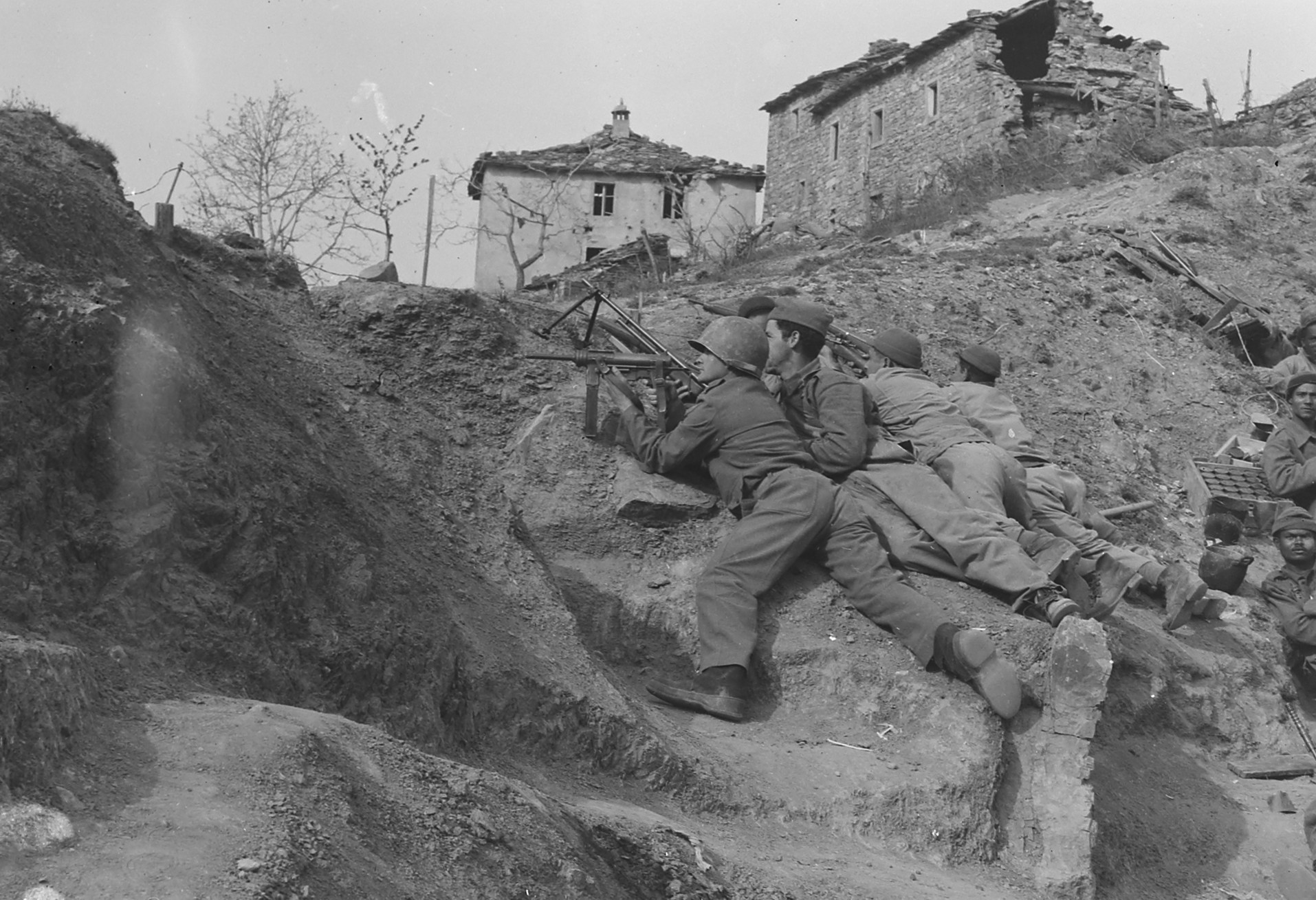

Known as the Conquista del Norte (Nordfeldzug/ Northern Conquest, or War for Lebensraum) against Brazil, falsely confused by some as the failed attempt to conquer Brazil and with it all of South America/ Latin America for the Anden Axis , but in truth this Eastern South American War fought mostly between Greater Argentina (Gran Argentina) and the Federal Republic of Brazil, which was partially supported by the Untied States of America, albeit not as much as the ideologically suspicious Soviet Union, because the German Empire and German controlled Europe was seen as the far more worse and much more dangerous threat globally. A political ideological, cultural, lingual and even racial war fought by Argentina with all means of their nation state in the attempt to annex the majorly Brancos (White) people in the South of the Country and the capital region, while multiracial Pardos and African Pretos dominated the Center and the North of Brazil would be Argentinian puppet states, as well as so called Race States for the Mestizo Pardos/ Pretos in which they would govern among themselves, with Argentinian/ White oversight, or advisers, but not outright direct control for the most part. This included the annexation of most of Brazil’s 47,8 million population, most of it’s Coal and other goods being directly integrated into Argentina, alongside the majorly German, Italian, Spanish and Portuguese descendant ethnic population in the Southern States until the Parana River. Most would be administrated by the Argnetinian Military Command during occupation of Rio Grande de Sul, Santa Catharina and Parana, but despite being larger then the Federal United States of America the Argentinians and their German leadership did not wish to annex to much non-white areas, despite planning to use even those populations as slave labor later on. A source for coffee, cotton, cacao and corn around 500 million US Dollar had also been invested into Brazil in between the wars, fewer then the around 1 billion $ invested in Argentina ans Chile each, which was why many by the Argentinian Propaganda so called Yankee-Imperialists supported the Isolationists and to remain neutral in the South American Wars and conflicts in Latin America by the Andean Axis, up to the point that some even supported the Andean Axis diplomatically, with trades, goods and equipment of all kind before they joined the War against them.

The good neighbor policy quickly faded to that of the Washington Police who controlled and guided it’s neighbors into the American Alliance/ American Allies against a common threat that might aid the Germans and Japanese and their allies to one day bring the war directly unto American soil once it all the European Great War, the Asian Great War and the South American Great war local conflicts had merged into the new Second Great War, Second Global War, or Second World War. Supported by the British, French, Dutch and mainly Americans, Brazil held out and despite Argentinian and Andean Axis ships raiding the South Atlantic, South Pacific up to the Caribbean and US Californian West Coast, plots to bomb and shut down the Panama canal, the supply routes to Brazil trough the Caribbean and even to instigate a Southern States, or so called Neger (Negro) Southern States Rebellion, as German and Argentinian Nazi’s called one of their more outlandish plans, to make the Southern Democratic States, or their local African American Population rise up, all failed. Mexico itself became a Allied American Nation State when various Andean Axis, as well as German supported bandits and civil war factions ultimately lost to the central government and the American support it received. In Brazil itself most southern plantations and infrastructure, alongside parts of the overall forest were destroyed during the War with Argentina, but heavy battles in Sao Paulo and Santos weakened the Andean Axis forces resulting in the Battle of Rio de Janeiro becoming a turning point and the American Special Operations support for Anti-Andean Axis Guerrilla fighters in Paraguay and Uruguay along the Paraguay River and Parana River, which overall weakened the Andean Axis Powers supply lines and were the last straw breaking the Andean Axis war of conquest in Brazil and turning the tide of War until the Argentinians, Bolivians, Peruvians and Venezuelans would be pushed out of Paraguay, Uruguay, Guyana for good.

Chapter Ten: Comisariats
Chapter Ten: Comisariats
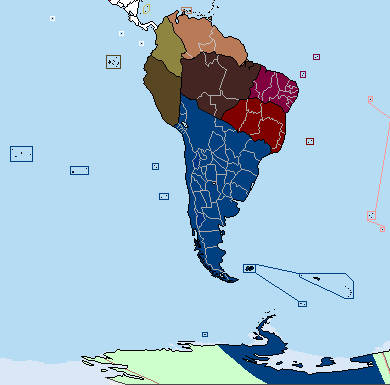
During the height of the Second World War in South America/ Latin America the Greater Argentina (Gran Argentina) ambitions had reached their overall height as well. During the Battle of Rio de Janero, wen victory seamed so very close, the Argentinian and German Nazi’s planned for the so called Comisariat (Reichskommissariat) especially the attempt to annex and integrate the southern Brazilian Provinces as Comissariat de Rico while other more autonomous Comisariats beside this white one were planned. While Greater Argentina planned the overall annexation of Bolivia and Chile alongside Paraguay and Uruguay to recreate former Rio de la Plata. At the same time Peru and Venezuela would become pro-Argentinan, pro-German puppet states while Columbia was undergoing the same treatment, mainly because of Argentinian fears for a reunification of Gran Columbia as a rival of theirs in Northern South America. Similarly Mexico was at the time planned as the furthest northern Comissariat alike, with it in some planes engulfing all of Central America and the Southwest United States, in other plans these regions themselves were divided in the new Comisariats of Centroamerica (Zentroamerika) and Atzlan (Northern Mexico, also New Mexico). Meanwhile, much more detailed and concrete plans were made for overall Brazil, whose overall division, annexation and conquest was planned in so particulate detail, that many other plans throughout history, even Imperial German ones against the Soviet Union dwarfed in comparison. The Republic of Brazil meanwhile would be divided into several smaller Comisariats outside of the southern white dominated regions the Argentinians wished to annex outright. These remaining Comisariats carved out of Brazil, or planned to be carved out of it were Amazonidia in the North/ Northwest, Caipira in the South/ Southeasts and Sertanejo in the East/ Northeast. Among these Comisariats the planned Amazonia one in the North/ Northwest of former Brazil would be mainly the Amazon River and the Amazon Rainforest were the majority of the overall population would be Amerindian/ Indigenas and Mestizo/ Pardos alike.

This meant that in the minds of the Argentinian/ German Nazi’s and Fascists of all the Comisariats created out of Brazil, Amazonia itself was seen as the most primitive, savage and racial inferior one according to their overall ideology and a basis for tropical woods and wood overall for the most part. To the South meanwhile the Comisariat of Caipira to the South/ Southeast settled mainly by Branco and Pardos, which would control the most infrastructural and industrial build up region of former Brazil was why it was the most protected and the most directly Argentinian controlled and held onto outside of outright annexed regions that would become a part of Greater Argentinia (Gran Argentina) directly. All to the East and Northeast, the last Comisariat was that of Sertanejo were mainly Brancos and Pardos lived overall and that was a part of former Brazil, which was centered around the major plantations of the area, an agricultural center to support and supply Argentina with food and other goods, majorly coffee, cotton, cacao and corn. Because of this importance, it was much more so under direct Argentinian control and protection for it’s importance of food and other good supplies then the more northern Amazonia, were Venezuela would also have some influence because of it’s proximity, but overall Sertanejo had much less then Caipira in comparison. This way the three former Brazilian Comisariats were clearly divided in influence and importance with the major one being Comisariat Caipia in the South/ Southeast, followed by Comisariat Sertanejo and ultimately Comisariats Amazonia. Many of these plans would after the war be used in the Buenos Aires trials against the Argentinian and German Nazi’s Fascists and others by Brazil and I’s allies as proof that even the horrible crimes they had done throughout the Second World War in South America were nothing in comparison to the crimes of ethnic cleansing, deportations and mass slaughter they still planned to do in their ambitions and goals for all of South America/ Latin America. The overall plan to make sure that they would dominate South America for centuries, or millennia into the future to ensure that their dominance and hegemony would never be threatened, either by winning this war, or the next one.

During the height of the Second World War in South America/ Latin America the Greater Argentina (Gran Argentina) ambitions had reached their overall height as well. During the Battle of Rio de Janero, wen victory seamed so very close, the Argentinian and German Nazi’s planned for the so called Comisariat (Reichskommissariat) especially the attempt to annex and integrate the southern Brazilian Provinces as Comissariat de Rico while other more autonomous Comisariats beside this white one were planned. While Greater Argentina planned the overall annexation of Bolivia and Chile alongside Paraguay and Uruguay to recreate former Rio de la Plata. At the same time Peru and Venezuela would become pro-Argentinan, pro-German puppet states while Columbia was undergoing the same treatment, mainly because of Argentinian fears for a reunification of Gran Columbia as a rival of theirs in Northern South America. Similarly Mexico was at the time planned as the furthest northern Comissariat alike, with it in some planes engulfing all of Central America and the Southwest United States, in other plans these regions themselves were divided in the new Comisariats of Centroamerica (Zentroamerika) and Atzlan (Northern Mexico, also New Mexico). Meanwhile, much more detailed and concrete plans were made for overall Brazil, whose overall division, annexation and conquest was planned in so particulate detail, that many other plans throughout history, even Imperial German ones against the Soviet Union dwarfed in comparison. The Republic of Brazil meanwhile would be divided into several smaller Comisariats outside of the southern white dominated regions the Argentinians wished to annex outright. These remaining Comisariats carved out of Brazil, or planned to be carved out of it were Amazonidia in the North/ Northwest, Caipira in the South/ Southeasts and Sertanejo in the East/ Northeast. Among these Comisariats the planned Amazonia one in the North/ Northwest of former Brazil would be mainly the Amazon River and the Amazon Rainforest were the majority of the overall population would be Amerindian/ Indigenas and Mestizo/ Pardos alike.

This meant that in the minds of the Argentinian/ German Nazi’s and Fascists of all the Comisariats created out of Brazil, Amazonia itself was seen as the most primitive, savage and racial inferior one according to their overall ideology and a basis for tropical woods and wood overall for the most part. To the South meanwhile the Comisariat of Caipira to the South/ Southeast settled mainly by Branco and Pardos, which would control the most infrastructural and industrial build up region of former Brazil was why it was the most protected and the most directly Argentinian controlled and held onto outside of outright annexed regions that would become a part of Greater Argentinia (Gran Argentina) directly. All to the East and Northeast, the last Comisariat was that of Sertanejo were mainly Brancos and Pardos lived overall and that was a part of former Brazil, which was centered around the major plantations of the area, an agricultural center to support and supply Argentina with food and other goods, majorly coffee, cotton, cacao and corn. Because of this importance, it was much more so under direct Argentinian control and protection for it’s importance of food and other good supplies then the more northern Amazonia, were Venezuela would also have some influence because of it’s proximity, but overall Sertanejo had much less then Caipira in comparison. This way the three former Brazilian Comisariats were clearly divided in influence and importance with the major one being Comisariat Caipia in the South/ Southeast, followed by Comisariat Sertanejo and ultimately Comisariats Amazonia. Many of these plans would after the war be used in the Buenos Aires trials against the Argentinian and German Nazi’s Fascists and others by Brazil and I’s allies as proof that even the horrible crimes they had done throughout the Second World War in South America were nothing in comparison to the crimes of ethnic cleansing, deportations and mass slaughter they still planned to do in their ambitions and goals for all of South America/ Latin America. The overall plan to make sure that they would dominate South America for centuries, or millennia into the future to ensure that their dominance and hegemony would never be threatened, either by winning this war, or the next one.
Last edited:
Chapter Eleven: Andean Axis Powers on the Retreat
Chapter Eleven: Andean Axis Powers on the Retreat
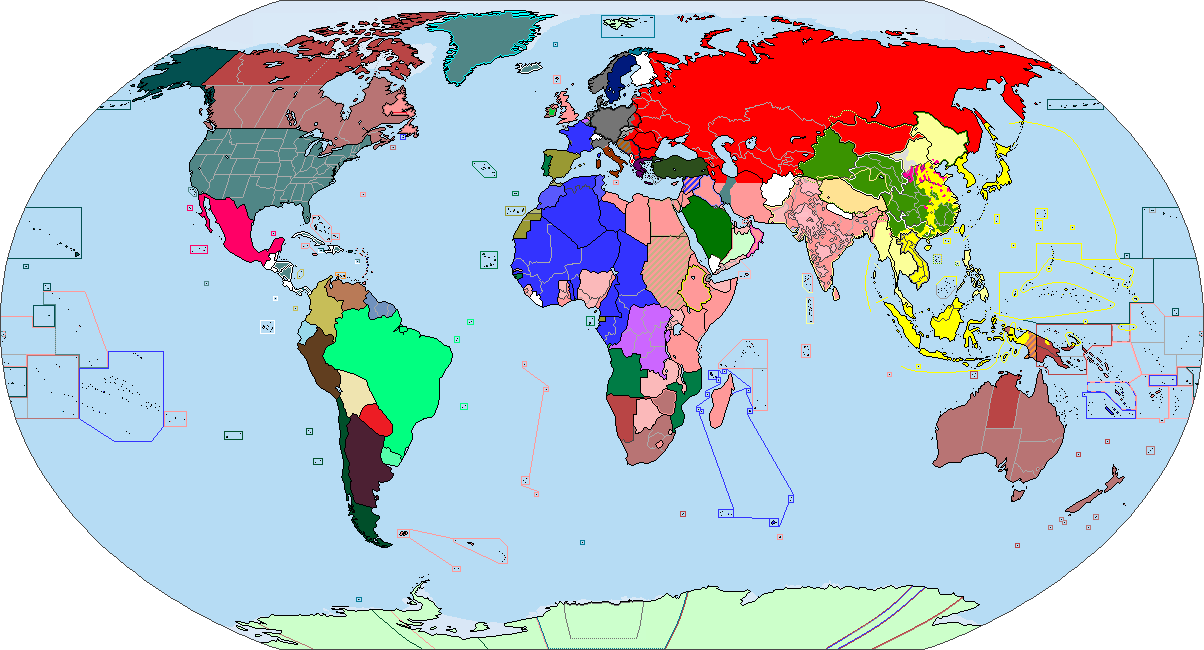
Slowly but steadily the Andean Axis Powers were pushed out, not only of Brazil, mainly by the Brazilians, but also the Guyana's by the Americans, British, Dutch and French which would establish the United Guyana Republic in the former colonies after the war and enforce border changes to Venezuela, Columbia, Peru and Bolivia, when the nation states of Ecuador, Columbia, Peru and others were reinstated. In Bolivia the Allies and local Guerrillas managed to overcome the regime, while in Chile, the Prussian inspired Chilean Armed Forces aided an overall coup to ensure not only they would themselves remain in power and influence, actually switching at the End of the War to make sure they would come out not only as a secure and victorious nation state joining the American Alliance, but actually betray and backstab the Argentinians to once and for all settle the dispute between them over Patagonia, after the Americans had suggested they would aid them in that endeavor, when they would open up to American Air Force Air Bases bombing Argentina from the West and also send some of their own Chilean Forces east to occupy some of the claimed Patagonian lands the Argentinians did not guard with many forces, as most of their armed forces were concentrated towards the American Alliance main frontlines to the North. Once American Alliance Forces had crossed the Uruguay River and the Rio de La Plata, Uruguay and Paraguay were efficiently reestablished once more and put under local governments made up by former rebel and guerrilla fighters, as well as newly elected party members of those groups that had resisted the Nationalist and Fascist groups throughout Andean Axis Reign. After the Battles of Parana, Santa Fe, Resario and La Plata, Senor Adolfo Hitler and most of his political and military government were cur off in the bombed out ruins of Buenos Aires, were some of them would be arrested, but Senor Hitler took his own live in a bunker underneath the former presidential palace. The Chileans who concentrated most of their Forces in the South pushing deep into Patagonia, therefore not partaking in the Battle of Buenos Aires alongside other American Allies Forces.

With the war returning into Argentinian territory, being fought on Argentinian soil and mostly taking Argentinian civil and military lives for once, overall things changed. The Andean Axis officially broke apart with the defeats, or stopping to continuing to fight by Venezuela, Columbia, Peru and Bolivia, as well as the betrayal of the Chileans, as the Argentinian Propaganda called it. For many former members of the Andean Axis it was easier to solely put the blame on the Argentinians and pro-Argentinian governments of theirs, while many members of those government, not trialed and killed themselves would also start blaming the Argentinians and their government to safe their very own hides as much as possible. Many Argentinians meanwhile began blaming the Germans who had taken over much of their Government and Military, claiming it had been them, like Senor Adolfo Hitler, not the Argentinean Leadership or the Argentinian people who had been responsible for the South American Wars, as this theater of the Second World War would be called. Later scholars and historians, philosophers and others would debate endlessly after the Second World War and much, much later how true such claims have overall been, how many the Argentinians truly knew of wars, deportations and killings and how much they actively supported it overall. Problematic was that various accounts from before, during and after the South American Wars would vary widely on these accounts, partially depending on who wrote them and why, both inside and outside of Argentina, the Andean Axis and the American Alliance alike. In an attempt to save themselves from blame and responsibility, many Argentinians themselves blamed their former regime as well and started to blame their own former civil and military government, industrialists cooperating with it and using slave labor of conquered civilians and prisoners of war for their war machinery. It was a means of redirecting personal responsibility and blame from themselves towards their overall leadership, even if many of them had been aiding and supporting the regime, either more direct as soldiers, or more indirect by working and profiting from it in one way, or another.
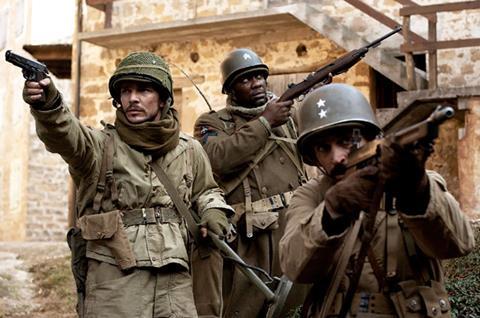

Slowly but steadily the Andean Axis Powers were pushed out, not only of Brazil, mainly by the Brazilians, but also the Guyana's by the Americans, British, Dutch and French which would establish the United Guyana Republic in the former colonies after the war and enforce border changes to Venezuela, Columbia, Peru and Bolivia, when the nation states of Ecuador, Columbia, Peru and others were reinstated. In Bolivia the Allies and local Guerrillas managed to overcome the regime, while in Chile, the Prussian inspired Chilean Armed Forces aided an overall coup to ensure not only they would themselves remain in power and influence, actually switching at the End of the War to make sure they would come out not only as a secure and victorious nation state joining the American Alliance, but actually betray and backstab the Argentinians to once and for all settle the dispute between them over Patagonia, after the Americans had suggested they would aid them in that endeavor, when they would open up to American Air Force Air Bases bombing Argentina from the West and also send some of their own Chilean Forces east to occupy some of the claimed Patagonian lands the Argentinians did not guard with many forces, as most of their armed forces were concentrated towards the American Alliance main frontlines to the North. Once American Alliance Forces had crossed the Uruguay River and the Rio de La Plata, Uruguay and Paraguay were efficiently reestablished once more and put under local governments made up by former rebel and guerrilla fighters, as well as newly elected party members of those groups that had resisted the Nationalist and Fascist groups throughout Andean Axis Reign. After the Battles of Parana, Santa Fe, Resario and La Plata, Senor Adolfo Hitler and most of his political and military government were cur off in the bombed out ruins of Buenos Aires, were some of them would be arrested, but Senor Hitler took his own live in a bunker underneath the former presidential palace. The Chileans who concentrated most of their Forces in the South pushing deep into Patagonia, therefore not partaking in the Battle of Buenos Aires alongside other American Allies Forces.
With the war returning into Argentinian territory, being fought on Argentinian soil and mostly taking Argentinian civil and military lives for once, overall things changed. The Andean Axis officially broke apart with the defeats, or stopping to continuing to fight by Venezuela, Columbia, Peru and Bolivia, as well as the betrayal of the Chileans, as the Argentinian Propaganda called it. For many former members of the Andean Axis it was easier to solely put the blame on the Argentinians and pro-Argentinian governments of theirs, while many members of those government, not trialed and killed themselves would also start blaming the Argentinians and their government to safe their very own hides as much as possible. Many Argentinians meanwhile began blaming the Germans who had taken over much of their Government and Military, claiming it had been them, like Senor Adolfo Hitler, not the Argentinean Leadership or the Argentinian people who had been responsible for the South American Wars, as this theater of the Second World War would be called. Later scholars and historians, philosophers and others would debate endlessly after the Second World War and much, much later how true such claims have overall been, how many the Argentinians truly knew of wars, deportations and killings and how much they actively supported it overall. Problematic was that various accounts from before, during and after the South American Wars would vary widely on these accounts, partially depending on who wrote them and why, both inside and outside of Argentina, the Andean Axis and the American Alliance alike. In an attempt to save themselves from blame and responsibility, many Argentinians themselves blamed their former regime as well and started to blame their own former civil and military government, industrialists cooperating with it and using slave labor of conquered civilians and prisoners of war for their war machinery. It was a means of redirecting personal responsibility and blame from themselves towards their overall leadership, even if many of them had been aiding and supporting the regime, either more direct as soldiers, or more indirect by working and profiting from it in one way, or another.

Chapter Twelve: Post-War Order
Chapter Twelve: Post-War Order
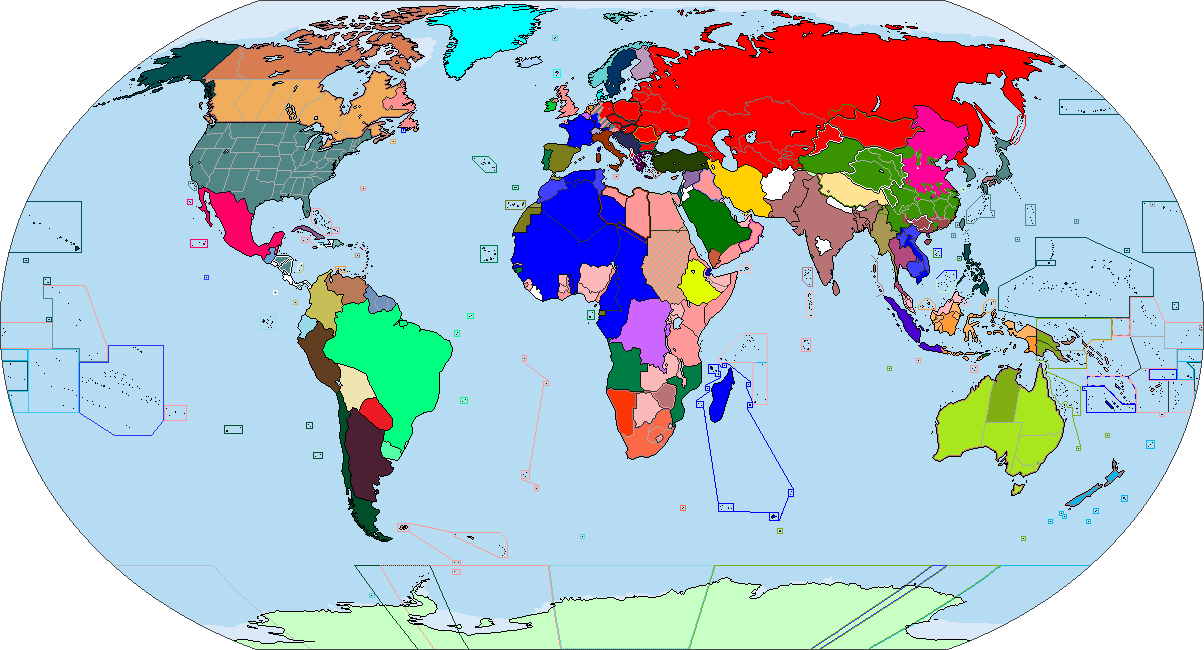
With the Second World War finally over in Europe, Asia and South America and the Greater Argentinian led Andean Axis, the German Empire led Alpine-Pyrenees (European) Axis and the Japanese Empire led East Asian Co-Prosperity Sphere defeated the landscapes, ethnic regions of living and the claims and new borders drawn by the victorious powers. In South America a new Republic of the United Guyana's, also known as the United Guyanan Republic was established with American, Brazilian, British, Dutch and French influence, diplomatic contact, trade and other support throughout this new Cold War. To the southern tip of South America, Chile had secured most of Patagonia, but not managed to gain the Rio Negro River as the definitive new northern border, as they originally had hoped and also had to pay any damage done to neighboring countries by their own forces, as compensation for their cooperation and agitations as a former member of the Andean Axis. Former Paraguay became a hotbed for South American Socialist and Communist Movements again, a long arm for the Soviet Union and Moscow throughout the Cold War, backing operations throughout most of Latin America, Nicaragua and Argentinian remained Nationalist and Fascist elements fighting the influence of Socialism and Communism, while Cuba, Paraguay and Venezuela became socialist and communist. Originally Left-wing regimes or coalition governments in Costa Rica, Chile and Guatemala are toppled with American, British and French aid either trough coups, or civil wars whenever possible, similarly the Soviet Union had backed their own movements, dictatorships and regimes as well. Brazil, Peru, Bolivia, Uruguay and Argentina would be targeted by one coup, civil war and guerrilla urban and jungle warfare alike, Columbia, Guatemala and Cuba would be the target of at least two failed, or successful ones, the Dominican Republic and the Guyana United Republic would be the target of three and the oil rich and strategic well places nation state of Venezuela would be the target of six, four successful and two failed coups trout the Cold War.
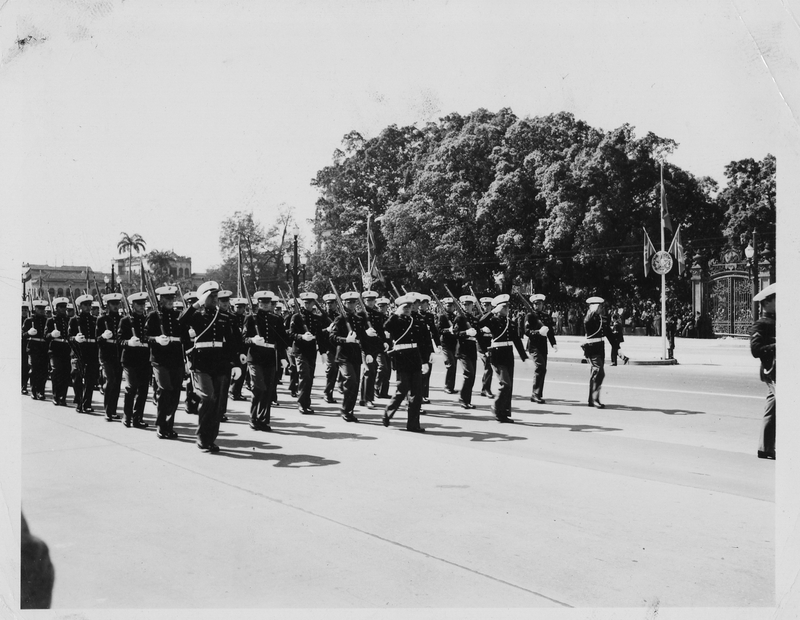
Uruguayan hopes to annex more of Northeast Argentina had to stay behind Brazilian ambitions to do the same and the overall territory Bolivia and Paraguay gained from North Argentina was also minimal in comparison to what Chile gained fro their betrayal at the End of the War. A notion Chile always counted by claiming Patagonia had always been low urbanized, populated and of few industry and other resources back then, making it in comparison an overall fair peace deal. Besides American and Brazilian support out of revenge against Argentina, many also suggested the British had backed Chilean claims so much to secure their Falkland Islands from future argentinian claims and together the American Alliance also had a heightened interest in preserving and strengthening Chile and other former Andean Axis Members, political parties, movements, regimes and individuals at least partly in the newly in tensions rising Cold War. Paraguay as a Left-leaning Nation thereby would prevent Argentina and Brazil to become majorly enemies of one another again and instead force them to some limited cooperation against socialist and communist groups backed by Paraguay. Bolivia, Columbia and Peru outright fought socialist and communist rebels to oppose within the civil wars and guerrilla wars of their own nation states, that they, or at least their dictators and regimes would have a overall pro-Western stance altogether. The same was also true for Chile for the most part, but Coalition Governments involving Socialists and Communists as well as the rivalry with Argentina would put the strong Southern South American Nation at least partly into the pro-left leaning pro-Soviet Union camp on occasion throughout the Cold War. They would also become famous for being the nation state into which Che Guevara and his rebels fled from Bolivia and from were Socialist and Communist rebels in Bolivia and Peru would be backed, trained and supported across the border. Meanwhile strange rumors of Senor Adolfo Hitler not having died, but actually fled to a secret base in Tierra del Fuego (Fireland/ Land of Fire) or Argentinian claimed Antarctica would persist until modern times.
The End

With the Second World War finally over in Europe, Asia and South America and the Greater Argentinian led Andean Axis, the German Empire led Alpine-Pyrenees (European) Axis and the Japanese Empire led East Asian Co-Prosperity Sphere defeated the landscapes, ethnic regions of living and the claims and new borders drawn by the victorious powers. In South America a new Republic of the United Guyana's, also known as the United Guyanan Republic was established with American, Brazilian, British, Dutch and French influence, diplomatic contact, trade and other support throughout this new Cold War. To the southern tip of South America, Chile had secured most of Patagonia, but not managed to gain the Rio Negro River as the definitive new northern border, as they originally had hoped and also had to pay any damage done to neighboring countries by their own forces, as compensation for their cooperation and agitations as a former member of the Andean Axis. Former Paraguay became a hotbed for South American Socialist and Communist Movements again, a long arm for the Soviet Union and Moscow throughout the Cold War, backing operations throughout most of Latin America, Nicaragua and Argentinian remained Nationalist and Fascist elements fighting the influence of Socialism and Communism, while Cuba, Paraguay and Venezuela became socialist and communist. Originally Left-wing regimes or coalition governments in Costa Rica, Chile and Guatemala are toppled with American, British and French aid either trough coups, or civil wars whenever possible, similarly the Soviet Union had backed their own movements, dictatorships and regimes as well. Brazil, Peru, Bolivia, Uruguay and Argentina would be targeted by one coup, civil war and guerrilla urban and jungle warfare alike, Columbia, Guatemala and Cuba would be the target of at least two failed, or successful ones, the Dominican Republic and the Guyana United Republic would be the target of three and the oil rich and strategic well places nation state of Venezuela would be the target of six, four successful and two failed coups trout the Cold War.

Uruguayan hopes to annex more of Northeast Argentina had to stay behind Brazilian ambitions to do the same and the overall territory Bolivia and Paraguay gained from North Argentina was also minimal in comparison to what Chile gained fro their betrayal at the End of the War. A notion Chile always counted by claiming Patagonia had always been low urbanized, populated and of few industry and other resources back then, making it in comparison an overall fair peace deal. Besides American and Brazilian support out of revenge against Argentina, many also suggested the British had backed Chilean claims so much to secure their Falkland Islands from future argentinian claims and together the American Alliance also had a heightened interest in preserving and strengthening Chile and other former Andean Axis Members, political parties, movements, regimes and individuals at least partly in the newly in tensions rising Cold War. Paraguay as a Left-leaning Nation thereby would prevent Argentina and Brazil to become majorly enemies of one another again and instead force them to some limited cooperation against socialist and communist groups backed by Paraguay. Bolivia, Columbia and Peru outright fought socialist and communist rebels to oppose within the civil wars and guerrilla wars of their own nation states, that they, or at least their dictators and regimes would have a overall pro-Western stance altogether. The same was also true for Chile for the most part, but Coalition Governments involving Socialists and Communists as well as the rivalry with Argentina would put the strong Southern South American Nation at least partly into the pro-left leaning pro-Soviet Union camp on occasion throughout the Cold War. They would also become famous for being the nation state into which Che Guevara and his rebels fled from Bolivia and from were Socialist and Communist rebels in Bolivia and Peru would be backed, trained and supported across the border. Meanwhile strange rumors of Senor Adolfo Hitler not having died, but actually fled to a secret base in Tierra del Fuego (Fireland/ Land of Fire) or Argentinian claimed Antarctica would persist until modern times.
The End
Threadmarks
View all 12 threadmarks
Reader mode
Reader mode
Recent threadmarks
Chapter Five: Totalitarian Control Chapter Six: Alliances Pacts and Factions Chapter Seven: Battle of Peru Peru Campaign or Northern Campaign Chapter Eight: Northern Andes War Chapter Nine: Conquista del Norte Chapter Ten: Comisariats Chapter Eleven: Andean Axis Powers on the Retreat Chapter Twelve: Post-War Order
Share: